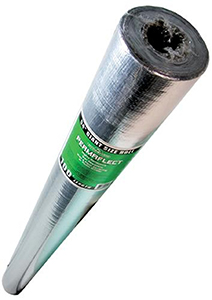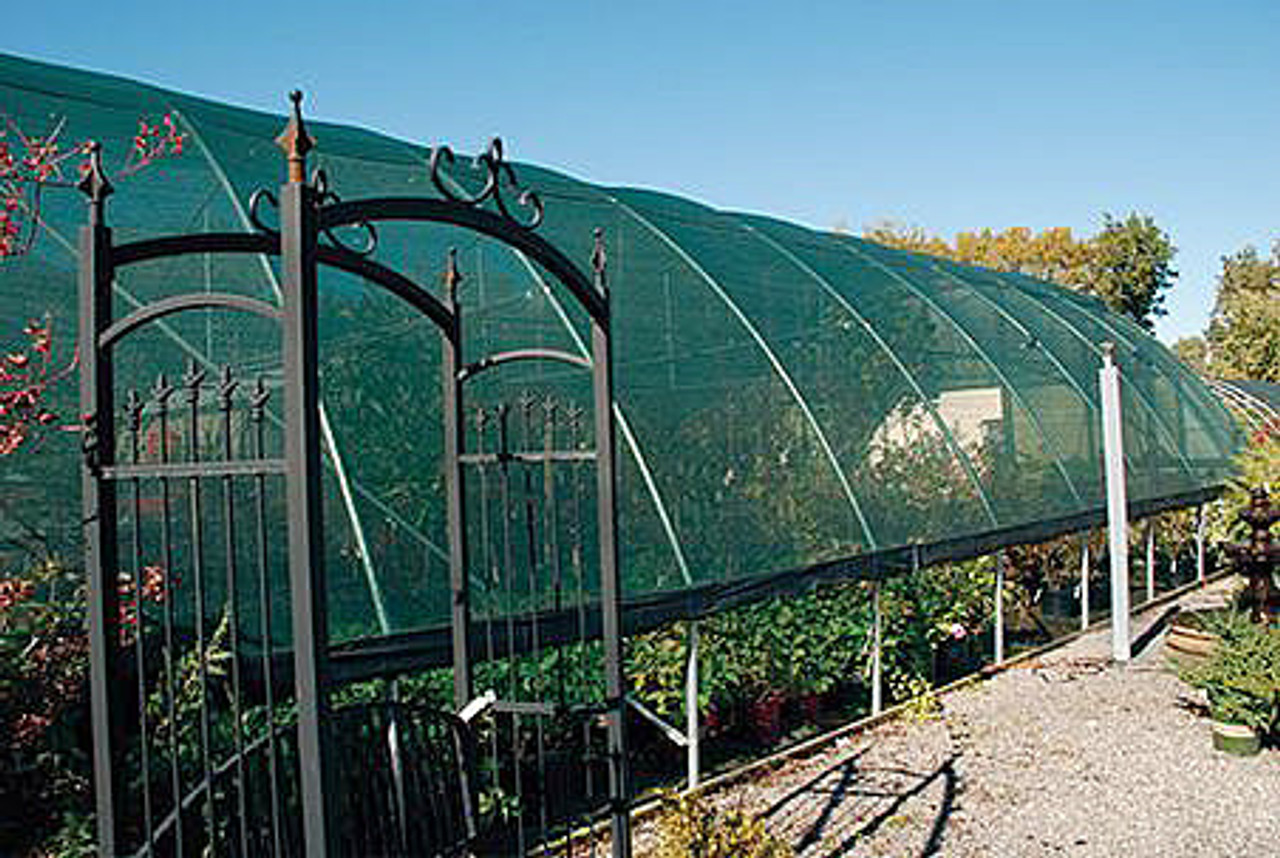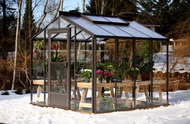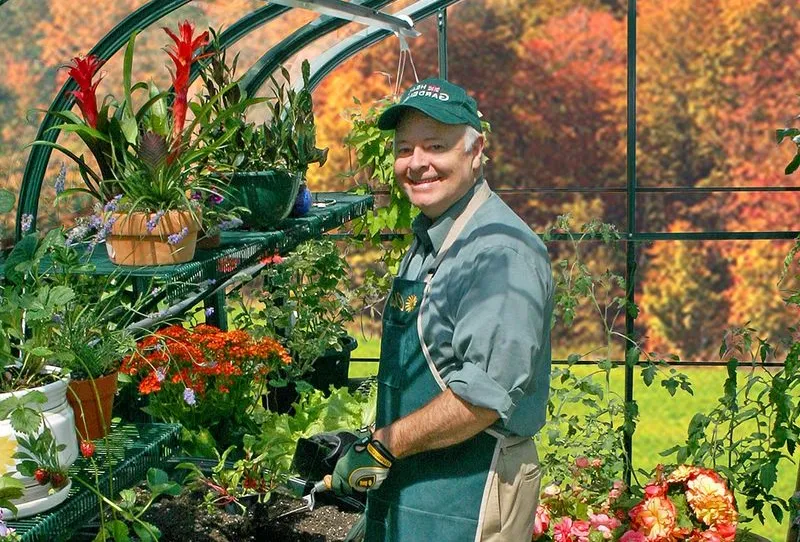What You Need to Know about Greenhouse Insulation
Growing your garden all year round, even in extreme weather, is doable with a cozy, well-insulated greenhouse. Picking the right insulation can affect how well your plants grow and thrive!
Learn about the latest types of greenhouse insulation and find out what to keep in mind when purchasing and installing insulation to ensure your plants enjoy a flourishing environment.
Benefits of Greenhouse Insulation
Insulating your greenhouse brings major perks for gardeners, from boosting plant growth to slashing operational expenses. Consider these benefits of insulation for your greenhouse:
-
Temperature Regulation
Insulation helps keep a consistent temperature in the greenhouse, which is vital for plant development. Since plants react to temperature changes, which can disrupt their metabolism, maintaining the right temperature is critical. Too cold, and their growth slows down, potentially leading to frost damage or stunted growth. Too hot, and plants may wilt, experience heat stress, or, in severe cases, perish.
A stable temperature is essential for effective photosynthesis, the process by which plants turn light into energy. It also supports proper seed germination, flowering, and fruit production.
-
Energy Efficiency
Insulation’s ability to keep heat in during cooler months means there is less need for extra heating. This leads to more energy-efficient operations and lower energy bills, making it a financially wise choice.
-
Extended Growing Season
With insulation, you can kickstart your growing season earlier and keep it going longer. This extended growing period benefits tropical species, some dwarf fruit trees like citrus and avocados, and warm-weather veggies such as tomatoes, peppers, cucumbers, and eggplants.
-
Moisture Control
Proper insulation plays a role in controlling humidity levels inside the greenhouse. It minimizes condensation, reducing the risk of mold and plant diseases like bacterial blight or leaf spot fungus.
-
Protection Against Overheating
Insulation prevents the greenhouse from overheating in hotter regions or during the summer months. Excessively high temperatures can lead to increased transpiration, reduced photosynthesis, nutrient imbalances, and sunscald. These conditions often result in fewer fruits and lower-quality harvests.
-
Bubble Wrap Insulation
Bubble wrap is a cost-effective and efficient option for greenhouse insulation. With its air-filled plastic bubbles, this material excels in thermal insulation – it retains warmth on cold days and prevents overheating in the summer. It’s simple to install; you can cut it to suit any greenhouse size and attach it to the interior.
Apart from its temperature-regulating properties, bubble wrap also scatters sunlight, which helps protect plants from scorching. Its light weight and reusability add to its appeal as a budget-friendly insulation choice.

Our Bubble Insulation can reduce your greenhouse heating expenses by as much as 35% compared to tempered glass. This clear bubble plastic is excellent for retaining heat and evenly distributing light. It’s versatile, works with any glazing type, and you can install it effortlessly using double-faced tape, liner clips, or staples.
Featuring prominent, transparent bubbles and a sturdy, nylon-reinforced backing, it enhances your glazing’s R-value by up to 2.1 points and remains effective for 3-4 years.
-
Polycarbonate Panels
Polycarbonate panels are known for their durability and exceptional thermal properties. Their twin- or multi-wall structure delivers better heat retention and light diffusion than standard glass. Lightweight and straightforward to install, these panels are practically indestructible and suitable for various weather conditions.
They strike an ideal balance between insulation and allowing sunlight through, both essential for plant growth. Additionally, their UV resistance guarantees long-term effectiveness and protection against extreme weather.

Charley’s Greenhouse & Garden offers 25mm (1") thick polycarbonate panels designed with a 3-wall channel for enhanced strength, insulation, and clear visibility. The 1" thickness and an additional middle layer ensure a high insulation value of R 2.64.
The broad flute spacing of these panels allows for superior light transmission. They are available in clear (72% light transmission) and opal (35% light transmission) varieties. You can install these panels vertically; they have options for capped or vented tape-sealed ends to effectively control condensation.
-
Thermal Foil Lining
Thermal foil lining offers an efficient insulation solution for greenhouses, reflecting heat to enhance temperature control. It consists of a thin foil layer backed by bubble or foam material, effectively preventing heat loss in winter and maintaining a cool interior in summer by reflecting sunlight. This dual action makes it ideal for consistent growth conditions throughout the year.
Easy installation and durability make thermal foil lining an excellent choice to optimize energy efficiency and plant growth in your greenhouses without making structural changes to the building.

Permaflect Reflective Foil Insulation can transform your greenhouse environment by boosting warmth and enhancing light intensity. This strong, reinforced foil is simple to set up and can be cleaned easily to maintain its high reflectivity.
It’s ideal for new constructions under flooring or for retrofitting on north-facing walls using double-faced tape. Particularly effective in northern regions and extreme climates, it reflects 85% of heat and 95% of light, helping eliminate hot spots and improving indoor lighting conditions.
-
Shade Cloth
Shade cloth is a flexible greenhouse insulation option for controlling light and temperature. Creating a shield from harsh sunlight minimizes heat accumulation, resulting in a cooler environment beneficial for plants sensitive to direct sun exposure.
Available in different densities, shade cloth allows for tailored light filtration to meet the needs of various plants. It encourages healthier plant development by protecting against leaf burn and heat stress. With its ease of installation and adaptability, shade cloth sustains ideal growing conditions, particularly in regions with strong sunlight.

Safeguard your greenhouse plants from overheating with our Green Knitted Shade Fabric. Ideal for use in the spring, summer, and early fall, it’s designed to cover the roof and the south wall down to the bench level.
This fabric, light in weight, effectively blocks 60% of sunlight. It’s user-friendly and easy to cut to any size or shape without fraying. Crafted from high-density polyethylene with UV protection, its open knit pattern promotes airflow, helping prevent heat accumulation. Durable with a 5 to 10-year lifespan, this fabric offers a reliable solution for managing temperatures in your greenhouse.
-
Insulation Material’s R-Value
The R-value is a metric for evaluating insulation material’s resistance to heat flow. A higher R-value indicates better insulation, contributing to enhanced temperature regulation in the greenhouse. Select a material with an R-value that aligns with your climate needs.
-
Moisture Resistance
Greenhouses are environments with naturally high humidity, so picking an insulation that can cope with moisture without breaking down is essential. Moisture-resistant insulation prevents the growth of mold and mildew, which can negatively affect both the greenhouse structure and the plants inside. Choose materials that can sustain high humidity levels while retaining their insulative properties.
-
Effect on Light Transmission
The selection of insulation plays a role in determining the amount and quality of light plants receive, a key element in their growth. Certain insulating materials may obstruct or diffuse sunlight, which can be advantageous in extremely sunny environments but counterproductive in areas with less sunshine.
When choosing insulation, consider its impact on light transmission and opt for a material that offers an appropriate balance tailored to the needs of the specific plant varieties you cultivate in your greenhouse.
-
Regular Check-ups and Repairs
Regularly inspect your insulation, much as you would your plants. Keep an eye out for any damage like rips or tears or areas where it has detached from the greenhouse walls and ceiling. Insulation can be heavily impacted by weather conditions, so addressing small problems early can save you from costly repairs down the line. Pay special attention to corners and edges, as they tend to wear out first.
-
Cleaning Your Greenhouse Insulation
Keeping your insulation clean is essential for maximizing light penetration and maintaining its insulative properties. Dust, dirt, and plant debris can accumulate on the surface, reducing light transmission and potentially harboring pests or diseases. Clean the insulation gently but thoroughly, using a mild soap solution and a soft cloth or sponge.
Types of Greenhouse Insulation
When it comes to insulating your greenhouse, there are various materials and methods to choose from, each with its own benefits. Explore the different types of greenhouse insulation available to find the best fit for your gardening needs.
Factors to Consider when Selecting Greenhouse Insulation
Choosing the right insulation for your greenhouse can impact your gardening success. From understanding the insulation’s thermal resistance to its effects on light and moisture, you need to consider the following factors to create a stable, thriving environment for your plants.
Maintaining Your Greenhouse Insulation
To ensure your greenhouse insulation remains effective and durable, regular maintenance is key. Follow these tips to keep your greenhouse insulation in top condition, helping to create the ideal environment for your plants.
Find High-Quality Greenhouse Insulation at Charley’s Greenhouse & Garden
Insulation is essential to your greenhouse, helping create the ideal growing environment for your plants. Explore the range of insulation and shading options available at Charley’s Greenhouse & Garden to find the perfect type for your hot house setup.


